
Two recent surveys – one from the The Economist and YouGov and the other from the medical research distributor medRvix – suggest that as many as four in ten Americans believe a civil war in this country is at least somewhat likely within the next decade. The results come amid a widespread and unfounded belief by many Republicans, including elected officials that the 2020 presidential election was stolen from Donald Trump through widespread electoral fraud.
Let’s hope that 40% of Americans are wrong. Over the four years of our nation’s first civil war, about 620,000 combatants, or about 2% of the country’s population at the time, were killed on battlefields or in triage – where injured troops were subjected to archaic surgical procedures with no anesthesia or antibiotics – sometimes in battles waged on a huge scale.
To identify the largest battles of the Civil War, 24/7 Tempo reviewed information published by the American Battlefield Trust, a nonprofit organization dedicated to Civil War education and battlefield preservation. Our list includes only battles in which more than 100,000 forces were engaged. Casualties are defined as the number of soldiers killed, injured, missing, or captured. In most cases, the highest number of casualties are injuries, followed by deaths. Some figures regarding force numbers and casualties are rounded estimates due to a lack of more accurate historical records.
The Battle of Gettysburg in southern Pennsylvania was the most important engagement of the war, marking a turning point that sent Confederate Gen. Robert E. Lee and his surviving soldiers limping back to the South to fight another day.
The bloody three-day engagement, which involved about 166,000 engaged troops, inflicted more than 50,000 casualties. That included more than 33,000 injured and more than 7,000 bodies left littering the battlefields. (These are the states with the most Civil War deaths.)
Despite this the turnaround for Federal forces, the war would rage on for another year, ending with Gen. Lee’s surrender on April 9, 1865, following the 292-day siege of Petersburg, Virginia.
Click here to see the largest battles of the Civil War
Though the Battle of Gettysburg was one of the largest and bloodiest of the war, two battles were even larger in terms of the number of engaged forces: The Battle of Fredericksburg from Dec. 11 to 15, 1862, and the Battle of Cold Harbor from May 31 to June 12, 1864. Some 170,000 men fought at Cold Harbor, while Fredericksburg engaged about 200,000 forces, making it the largest battle of the Civil War. (These were the greatest battles in American history.)
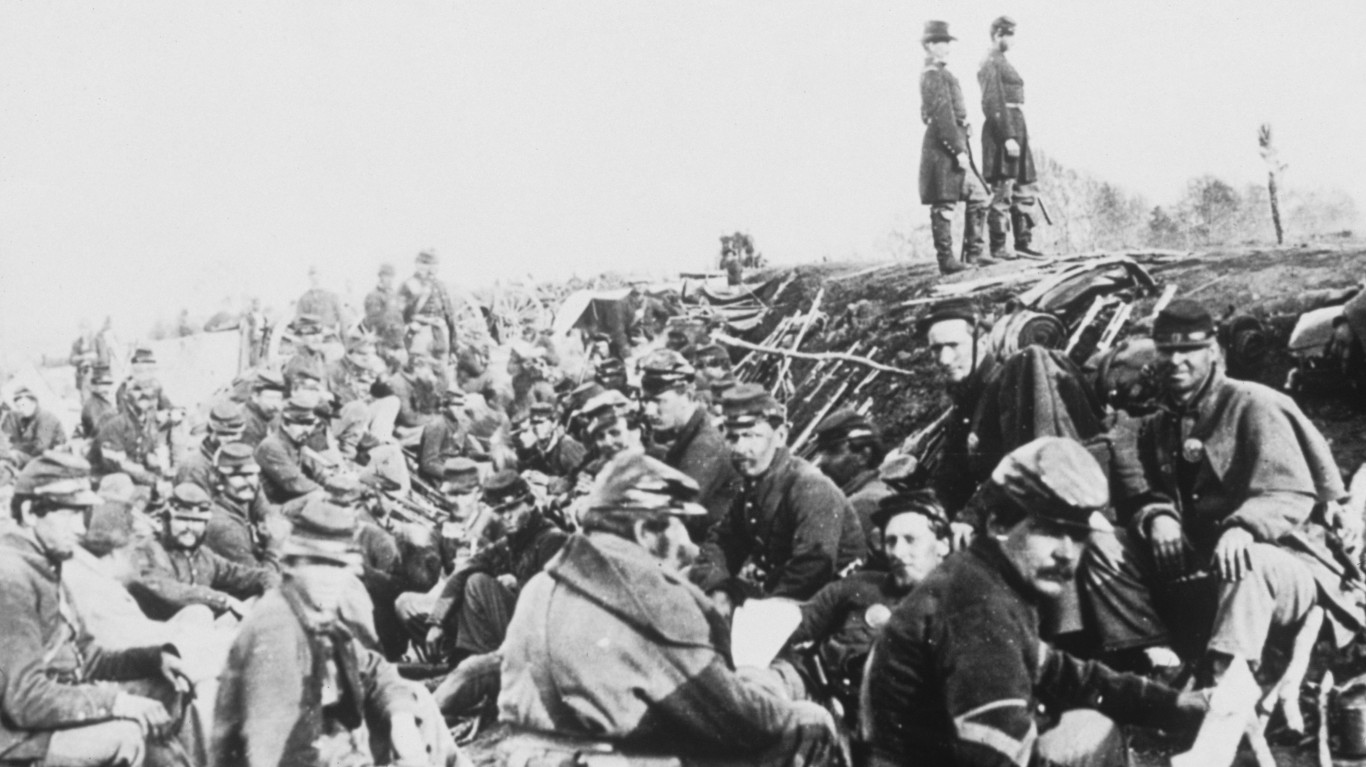
14. Second Battle of Petersburg
> Total forces engaged: 104,000 (Union: 62,000)
> Location: City of Petersburg, VA
> Date(s): June 15-18, 1864
> Union Casualties: 8,150
> Confederate Casualties: 3,236
Taking Petersburg was a primary objective of Union forces throughout the Civil War. If it fell, so too would the Confederate capital of Richmond 22 miles to the north. Though the Confederates managed to hold off Union forces during the three-day battle, it initiated the longest siege of the war, lasting 292 days. The siege ended with decisive victory for the Union, with Gen. Robert E. Lee surrendering to Gen. Ulysses S. Grant at Appomattox, Virginia, on April 2, 1865, seven days after the fall of Petersburg – effectively ending the Civil War.
[in-text-ad]

13. Battle of Vicksburg
> Total forces engaged: 110,000 (Union: 93,921)
> Location: Warren County, MS
> Date(s): May 18-July 4, 1863
> Union Casualties: 4,910
> Confederate Casualties: 32,363
Strategically located on the Mississippi River, Vicksburg was a prize target for Gen. Grant and his Union forces. After taking the state capital of Jackson, Union forces turned their guns to the west and fought their way toward the river, 47 miles west of Jackson. Confederate forces retreated to their fortifications at Vicksburg where they endured a 47-day siege. Realizing the futility of staying huddled amid dwindling supplies, about 29,000 Confederate troops surrendered on Independence Day 1863.
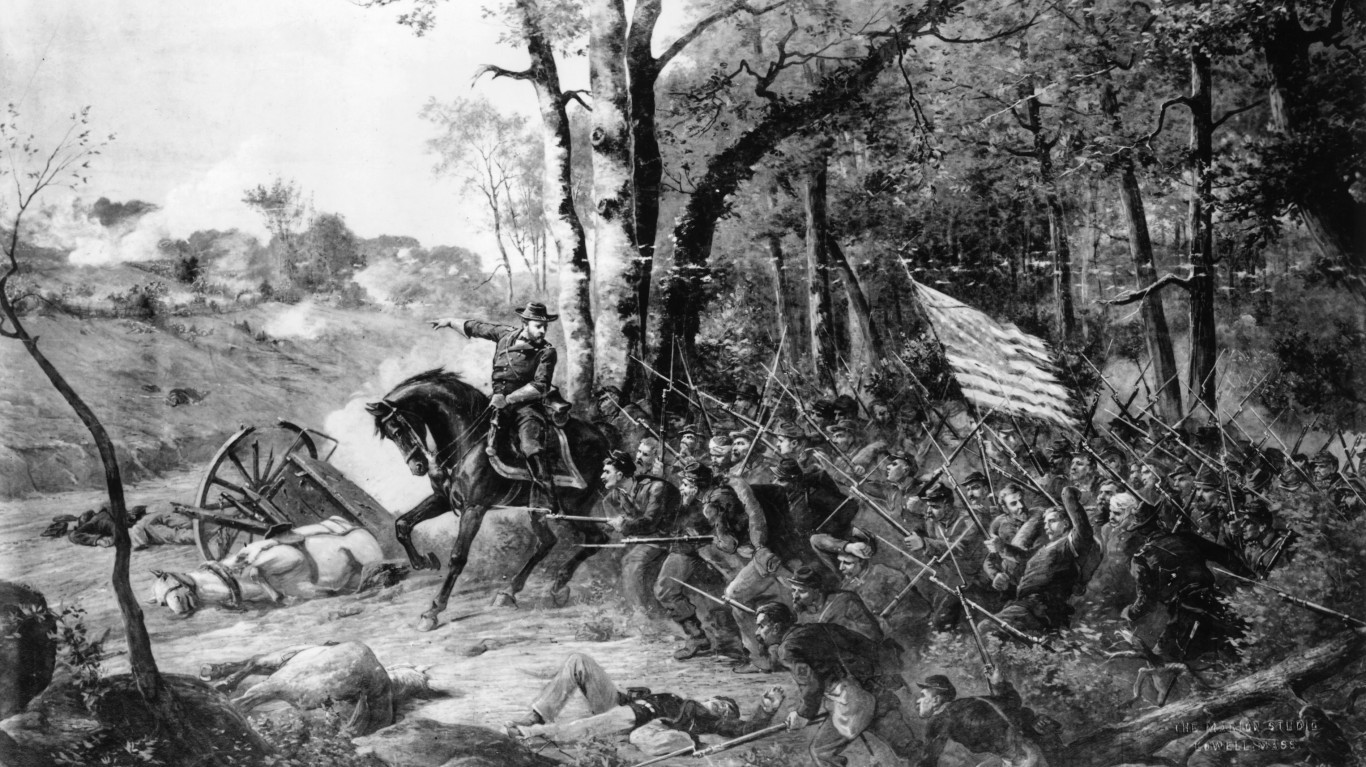
12. Battle of Shiloh
> Total forces engaged: 110,053 (Union: 65,085)
> Location: Hardin County, TN
> Date(s): April 6-7, 1862
> Union Casualties: 13,047
> Confederate Casualties: 10,669
Almost a year into the war, Union troops beat back the enemy and marched into the Confederate heartland. The Battle of Shiloh, also known as the Battle of Pittsburg Landing, opened the way for the Union to advance and eventually cut off Confederate military initiatives west of the Mississippi River. Contributing to the defeat was the demise of Confederate Gen. Albert Sidney Johnston, who died in battle, causing morale to plunge among his troops.
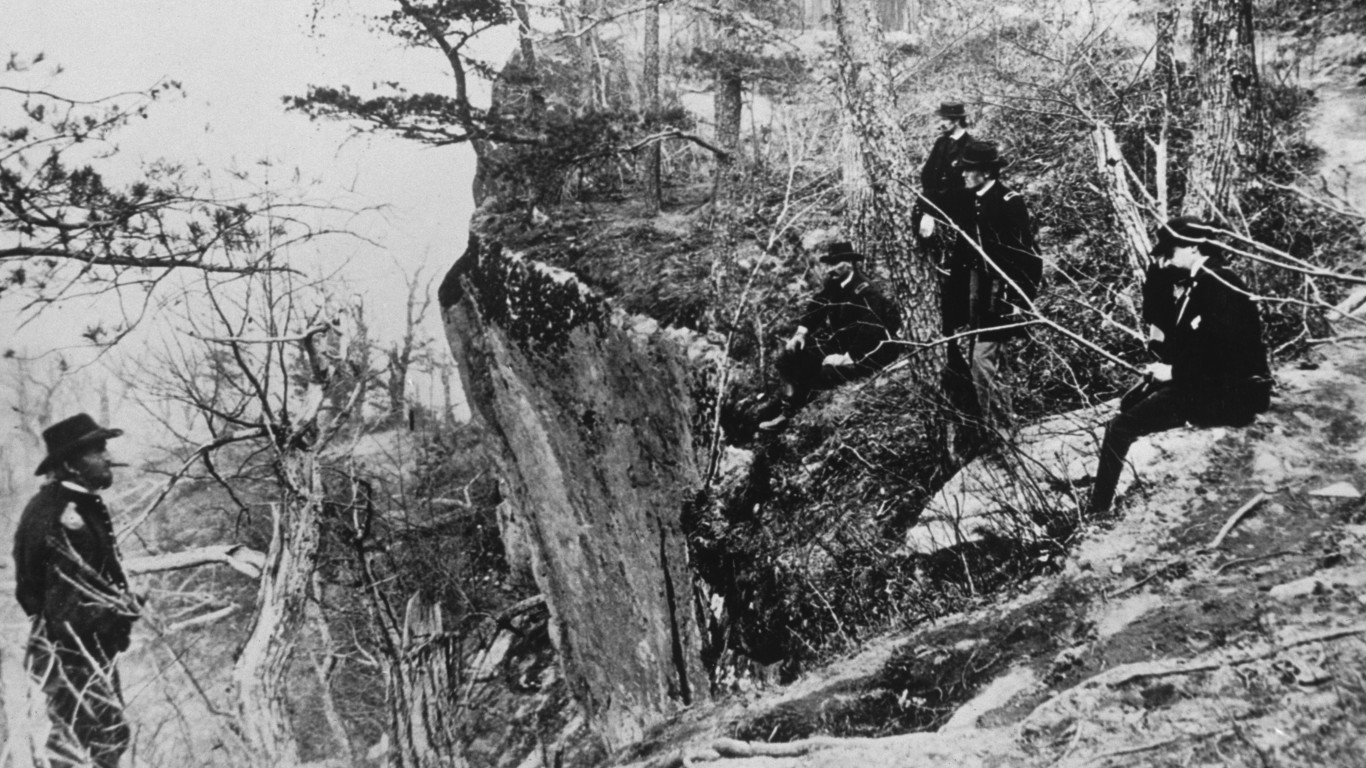
11. Battle of Chattanooga
> Total forces engaged: 121,400 (Union: 72,500)
> Location: Hamilton County and city of Chattanooga, TN
> Date(s): Nov. 23-25, 1863
> Union Casualties: 5,824
> Confederate Casualties: 8,000
The battle began following the defeat of Union General William Rosecrans at Chickamauga, in Georgia, and his retreat to Chattanooga. After Gen. Grant replaced Rosecrans with Maj. Gen. George Thomas, the Union had one of the most significant turnarounds in U.S. military history. Their win at Chattanooga meant that Federal troops could now plan to invade the Deep South. The invasion included Maj. Gen. William T. Sherman’s March to the Sea, also known as the Atlanta Campaign, the following year – a scorched-earth march to Savannah intended to cripple and demoralize the Confederacy.
[in-text-ad-2]
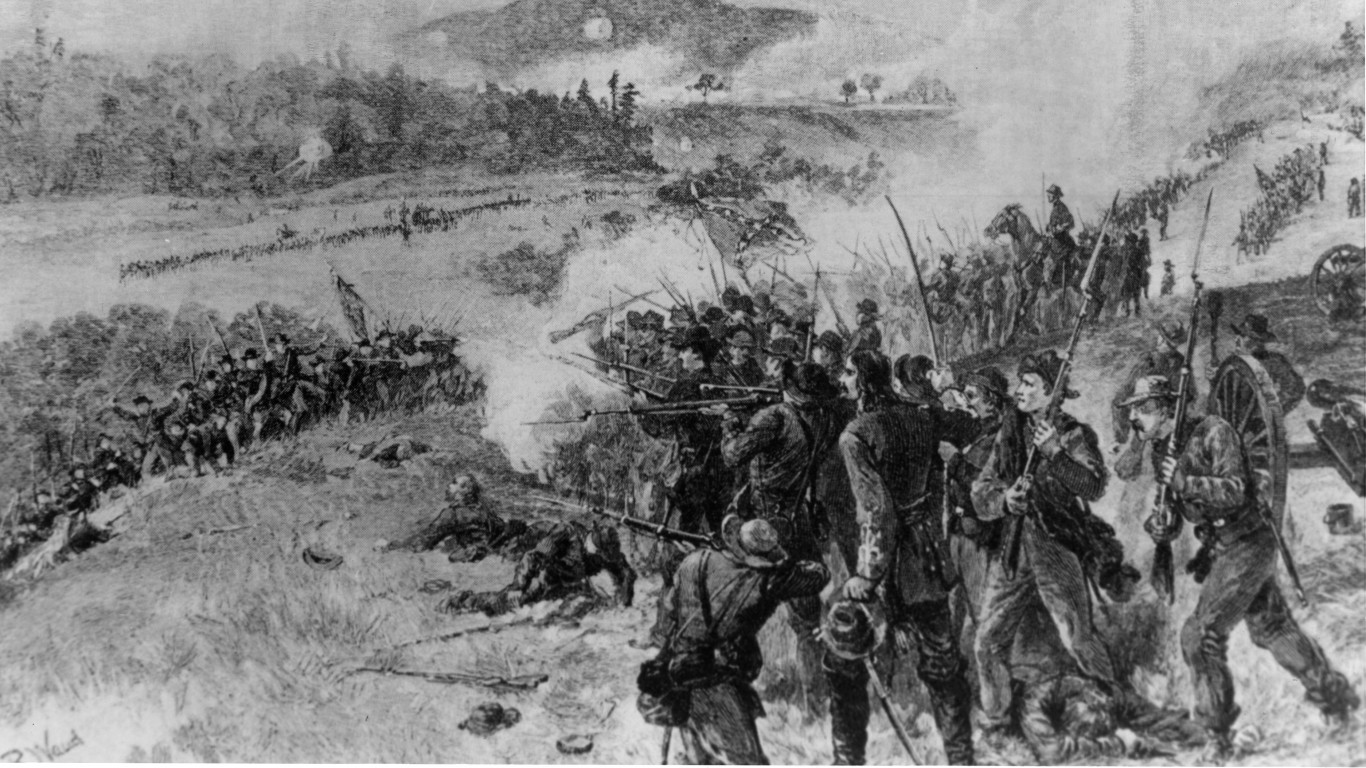
10. Battle of Chickamauga
> Total forces engaged: 125,000 (Confederate: 65,000)
> Location: Catoosa and Walker counties, GA
> Date(s): Sept. 18-20, 1863
> Union Casualties: 16,170
> Confederate Casualties: 18,454
Following their defeats at Gettysburg and Vicksburg, the Confederates scored a must-needed turnaround at the Battle of Chickamauga in northwestern Georgia. But the battle came at great cost to both sides: It was the second-bloodiest battle of the Civil War after Gettysburg, which had taken place two months earlier. The Confederate victory set the stage for a siege of Union forces at Chattanooga, just across the border in Tennessee. The Battle of Chattanooga was another turnaround moment in the war, but this time for the Federals who beat the Confederates back into Georgia.
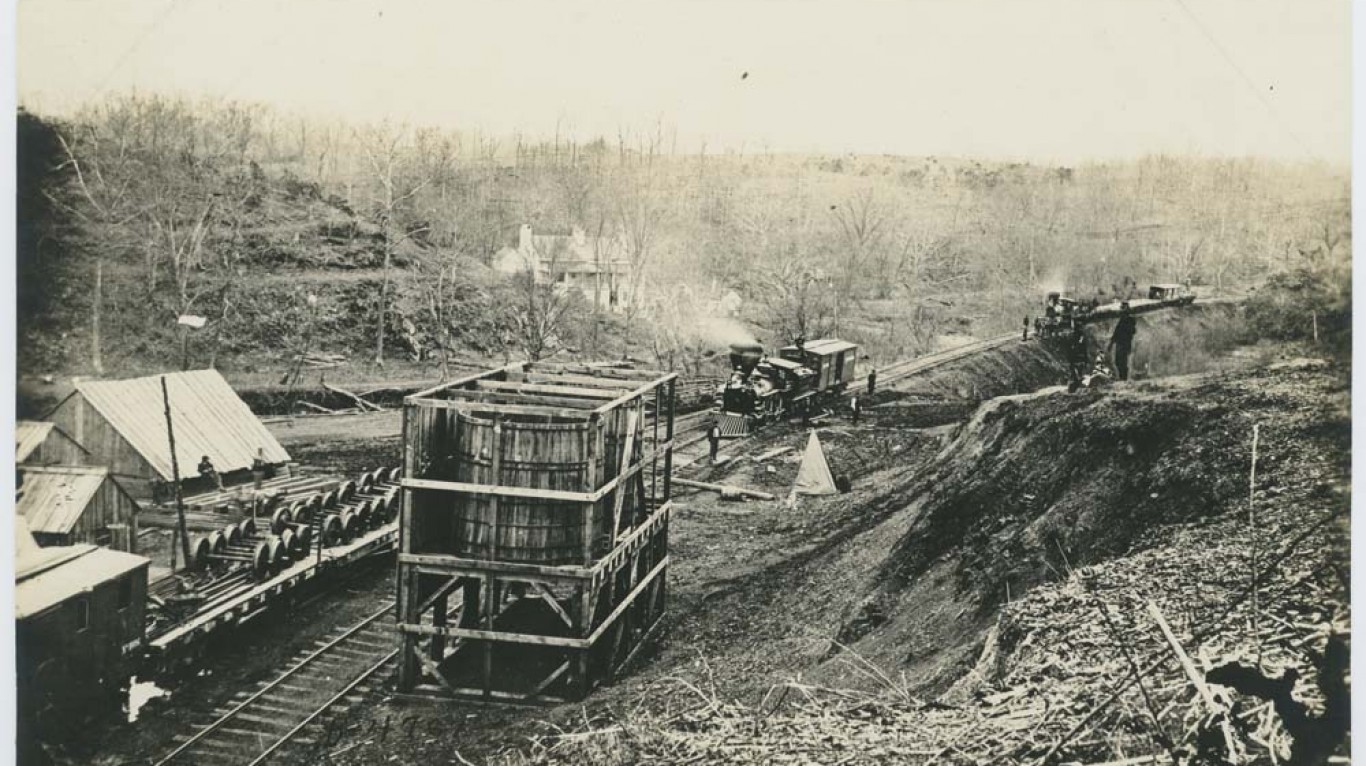
9. Second Battle of Bull Run
> Total forces engaged: 125,000 (Union: 70,000)
> Location: Prince William and Fairfax counties, VA
> Date(s): Aug. 28-30, 1862
> Union Casualties: 13,824
> Confederate Casualties: 8,353
Nearly five months after the Union victory at the Battle of Shiloh, the Confederacy racked up a major victory at the Second Battle of Bull Run, also known as the Battle of Second Manassas. This came about a year after the first Battle of Bull Run – the first full-scale battle of the Civil War – which also resulted in a Confederate win. In the second, larger battle, Gen. Lee’s southern army pushed Union Maj. Gen. John Pope’s forces back into Washington and allowed Lee and his troops to cross the Potomac River into Union territory.
[in-text-ad]

8. Battle of Antietam
> Total forces engaged: 132,000 (Union: 87,000)
> Location: Washington County, MD
> Date(s): Sept. 17, 1862
> Union Casualties: 12,401
> Confederate Casualties: 10,316
The deadliest one-day battle in American military history was ultimately a bloody stalemate, but the result favored the Union by showing the Federals’ ability to check Confederate advances into Union territory. It also was enough of a show of force by the North to keep Republicans in control of Congress and to embolden President Abraham Lincoln to issue the Emancipation Proclamation. A conclusive victory at Antietam would have influenced the congressional elections and encouraged Europe to recognize the Confederate States of America.
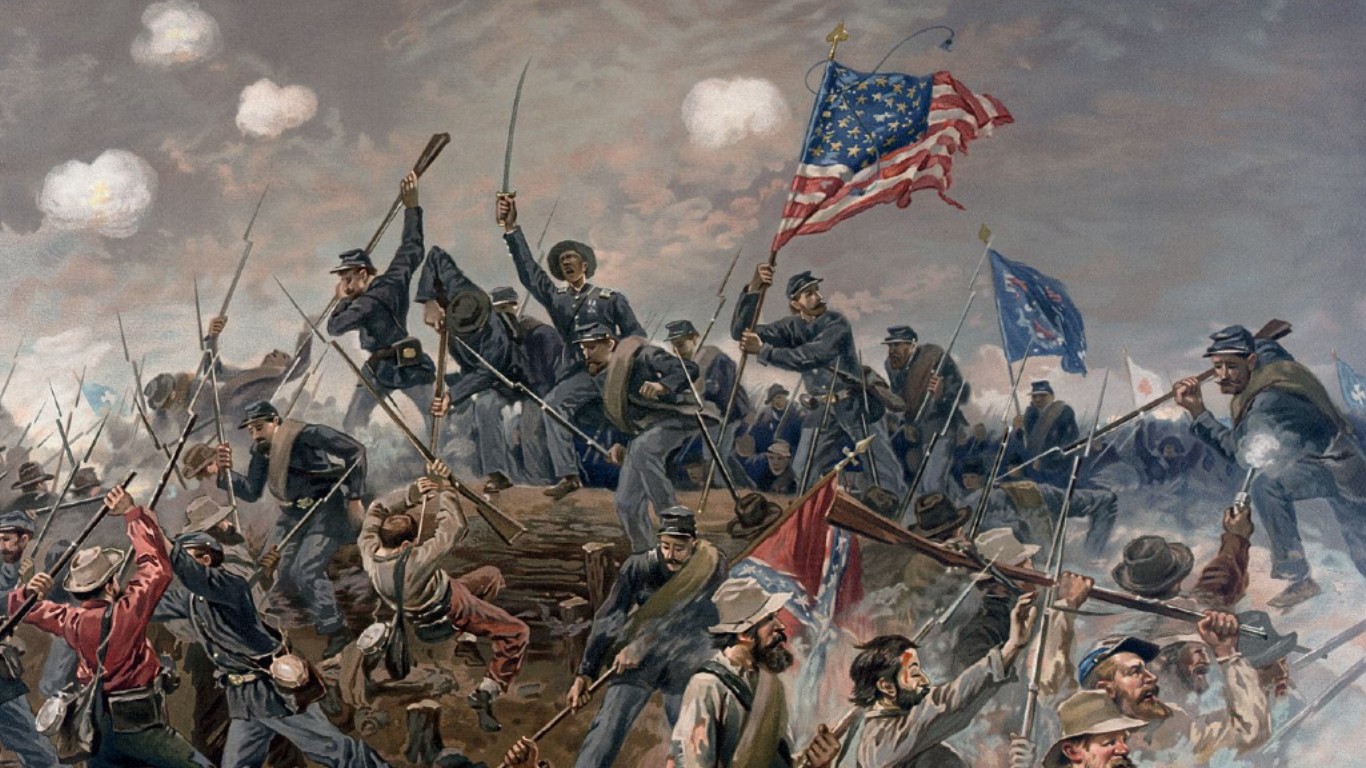
7. Battle of Spotsylvania Court House
> Total forces engaged: 152,000 (Union: 100,000)
> Location: Spotsylvania County, VA
> Date(s): May 8-21, 1864
> Union Casualties: 18,399
> Confederate Casualties: 12,687
May 1864 was one of the bloodiest months in U.S. military history, with three major Civil War battles – each involving more than 100,000 engaged forces – taking place in northern Virginia and northwestern Georgia. One of these was the Battle of Spotsylvania Court House, part of Gen. Grant’s Overland Campaign to hunt down Gen. Lee’s forces. The 12-day engagement was inconclusive and costly, with the Union failing numerous times to break through Confederate lines.
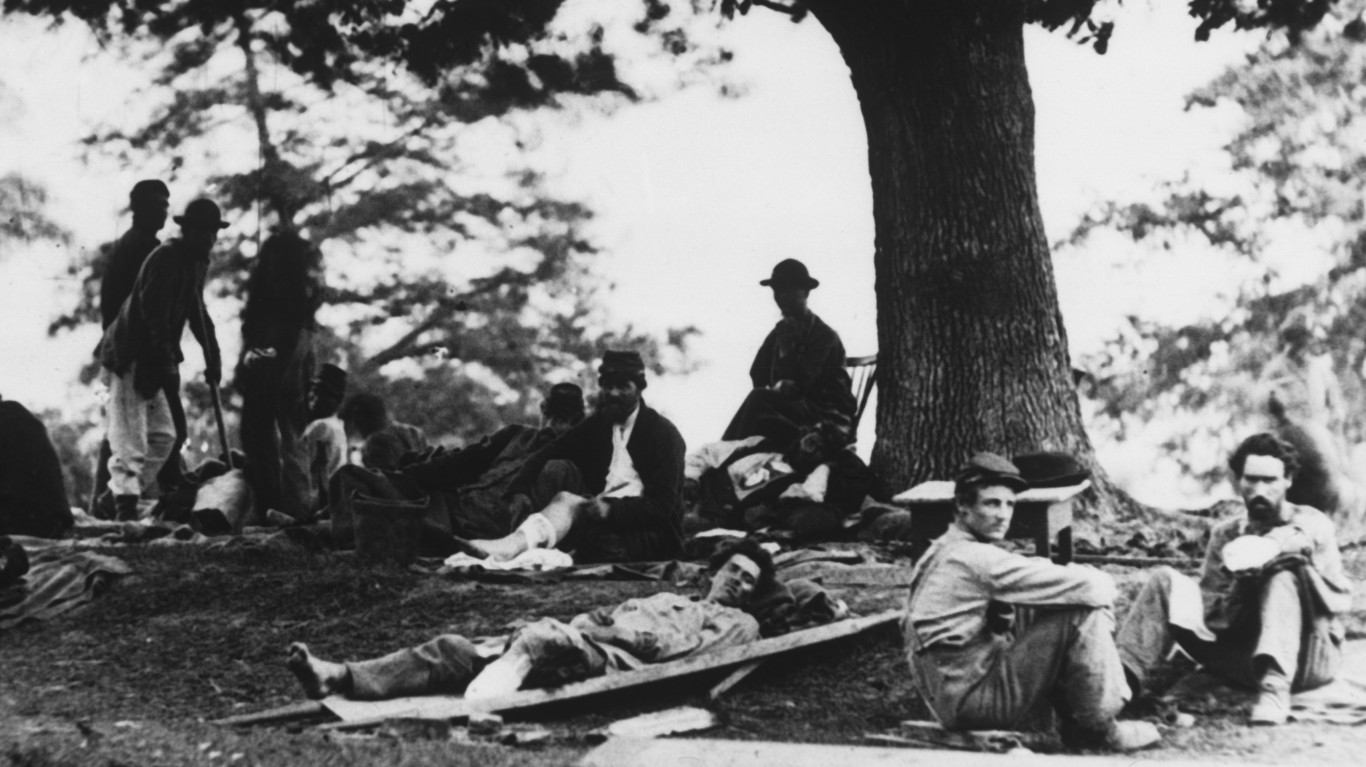
6. Battle of Chancellorsville
> Total forces engaged: 154,734 (Union: 97,382)
> Location: Spotsylvania County, PA
> Date(s): April 30-May 6, 1863
> Union Casualties: 17,304
> Confederate Casualties: 13,460
Robert E. Lee’s greatest military victory would also be Confederate Lt. Gen. Thomas J. “Stonewall” Jackson’s last when he was killed by friendly fire during this battle. Lee made a daring decision to face off Maj. Gen. Joseph Hooker’s Army of the Potomac. But Hooker’s talk of creating a “perfect” plan to oust Lee from his encampment at Fredericksburg didn’t meet his leadership abilities. With half the number of engaged forces, Lee refused to retreat and his forces stood their ground, opening the way for a Confederate offensive into Pennsylvania and a showdown with the Union at Gettysburg two months later.
[in-text-ad-2]
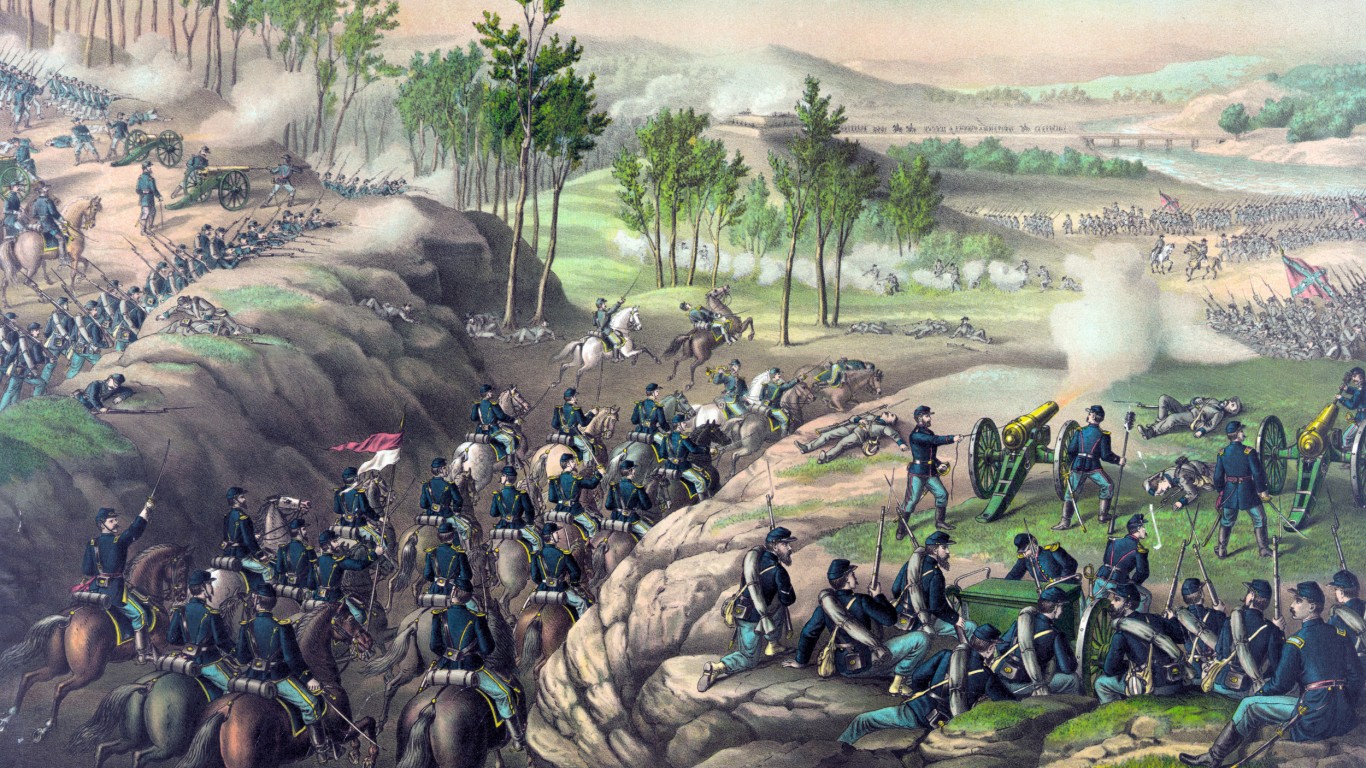
5. Battle of Resaca
> Total forces engaged: 158,787 (Union: 98,787)
> Location: Gordon and Whitfield counties, GA
> Date(s): May 13-15, 1864
> Union Casualties: 2,747
> Confederate Casualties: 2,800
One of three major Civil War battles involving at least 100,000 engaged forces, the Battle of Resaca in northwestern Georgia – along an important transportation route of the Western & Atlantic Railroad – occurred at the same time as the Battle of Spotsylvania Court House,. Maj. Gen. William T. Sherman ordered his troops to attack Confederate-fortified bridges, after which Confederate Gen. Joseph E. Johnson was forced to order his troops to withdraw, giving the Federals important logistical access on their march toward Atlanta.

4. Battle of the Wilderness
> Total forces engaged: 162,920 (Union: 101,895)
> Location: Spotsylvania and Orange counties, VA
> Date(s): May 5-7, 1864
> Union Casualties: 17,000
> Confederate Casualties: 13,000
The third of the major battles that took place in May 1864, the Battle of the Wilderness opened a Union march toward the Confederate capital of Richmond under the direction of Gen. Grant – who by then had been named Union General-in-Chief, the supreme commander of all Union forces. The two sides met in the dense woods of central Virginia and after 48 hours of brutal combat, neither side could declare victory. Grant was not dissuaded and continued his march toward Richmond.
[in-text-ad]
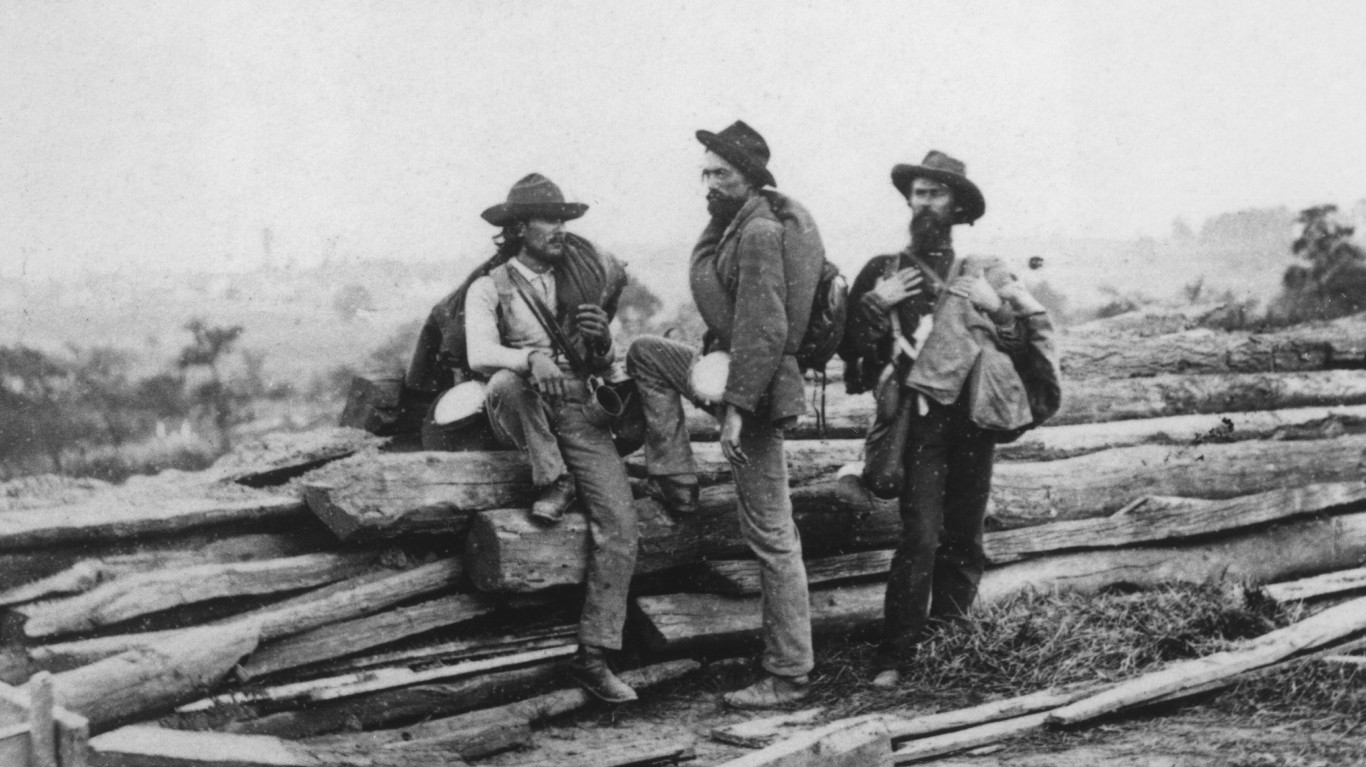
3. Battle of Gettysburg
> Total forces engaged: 165,620 (Union: 93,921)
> Location: Adams County, PA
> Date(s): July 1-3, 1863
> Union Casualties: 23,049
> Confederate Casualties: 28,063
The Battle of Gettysburg ended Gen. Lee’s attempt to invade the North, force a negotiated end to the war, and earn international recognition for the Confederate States of America as an independent nation. Lee and his surviving troops, many of them wounded and riding wagons in agony, limped back southward. But Union Gen. George G. Meade lost a vital opportunity to pursue and trap Lee, and the war raged on for two more years.
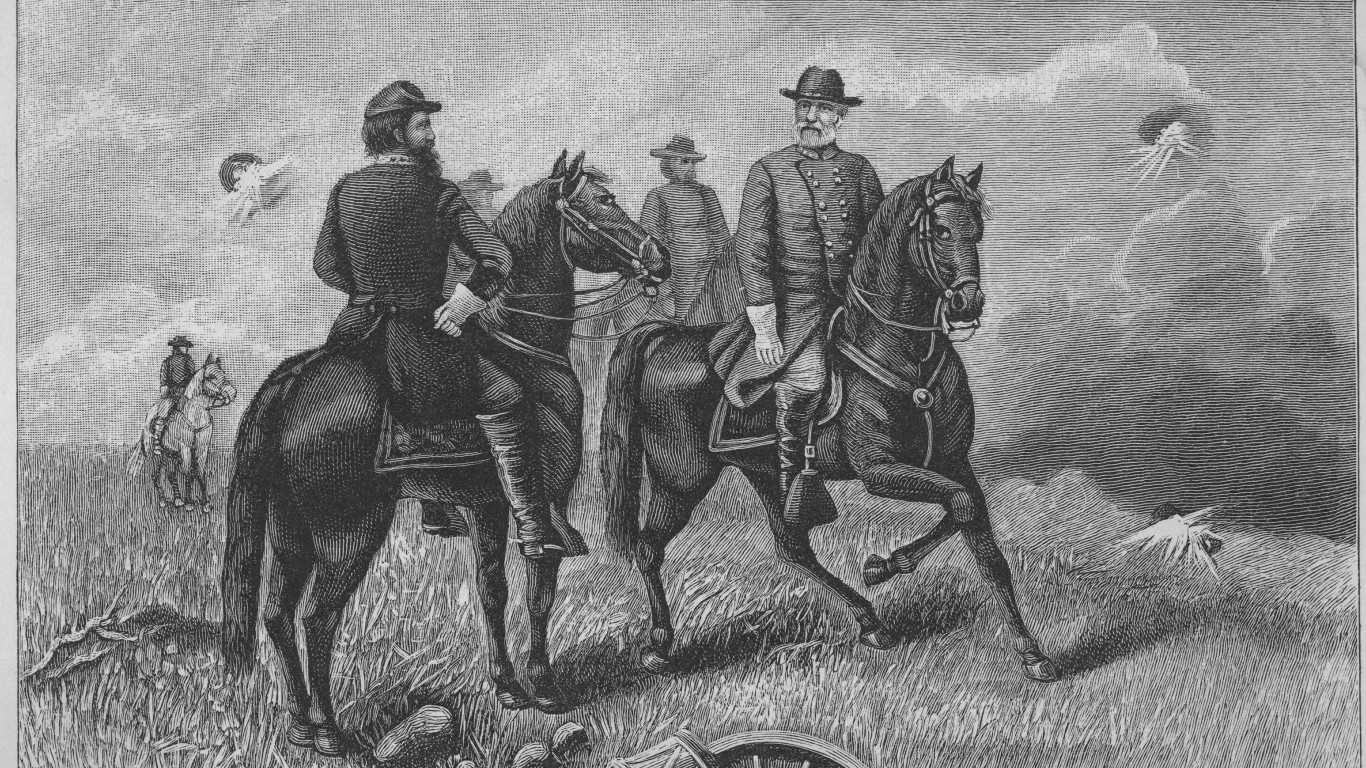
2. Battle of Cold Harbor
> Total forces engaged: 170,000 (Union: 108,000 Union)
> Location: Hanover County, VA
> Date(s): May 31-June 12, 1864
> Union Casualties: 12,737
> Confederate Casualties: 4,595
March 1864, a month that saw three major Civil War battles with more than 100,000 engaged forces, ended with the start of another major skirmish in Hanover County, Virginia, just north of the Confederate capital of Richmond. Though Gen. Lee’s troops outmaneuvered those of Gen. Grant, forcing the Federals to withdraw, the Confederates failed to hunt down Grant’s remaining troops. They were then able to cross the James River and march toward Petersburg, part of Grant’s Overland Campaign and a primary objective of Union forces throughout the Civil War.
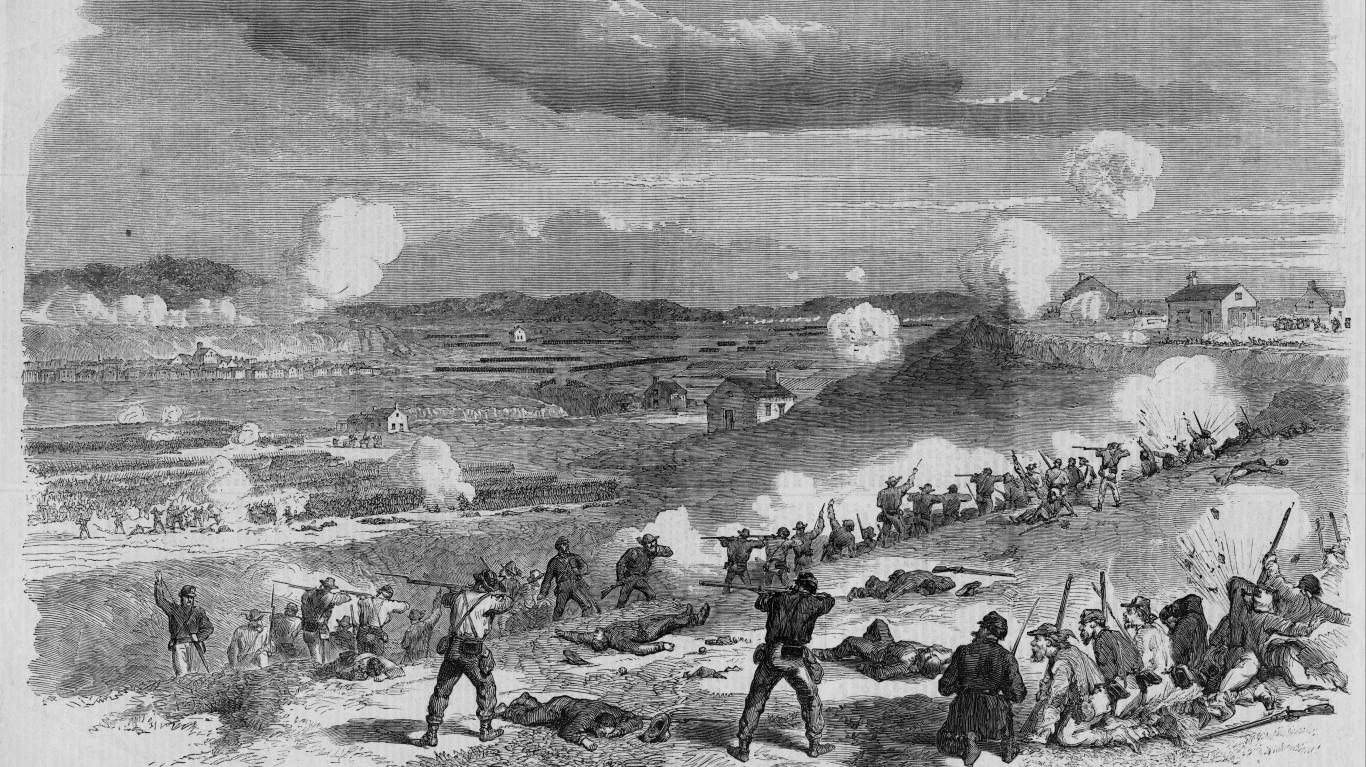
1. Battle of Fredericksburg
> Total forces engaged: 201,000 (Union: 123,000)
> Location: Stafford and Spotsylvania counties, VA
> Date(s): Dec. 11-15, 1862
> Union Casualties: 12,500
> Confederate Casualties: 6,000
Twenty months after the Battle of Fort Sumter, the official start of the Civil War, about 200,000 Union and Confederate Total forces engaged in the largest and one of the bloodiest of the war’s battles. Union Maj. Gen. Ambrose E. Burnside quickly redirected his forces to insert his army at the lower Rappahannock River between Gen. Lee’s forces and the Confederate capital of Richmond. The Confederates routed the Federals, however, forcing Burnside’s troops to retreat back across the river in an embarrassing defeat. The Battle of Fredericksburg also involved two firsts: the first instance in American military history of a river crossing under fire and the war’s first instance of urban combat.
Cash Back Credit Cards Have Never Been This Good
Credit card companies are at war, handing out free rewards and benefits to win the best customers. A good cash back card can be worth thousands of dollars a year in free money, not to mention other perks like travel, insurance, and access to fancy lounges. See our top picks for the best credit cards today. You won’t want to miss some of these offers.
Flywheel Publishing has partnered with CardRatings for our coverage of credit card products. Flywheel Publishing and CardRatings may receive a commission from card issuers.
Thank you for reading! Have some feedback for us?
Contact the 24/7 Wall St. editorial team.
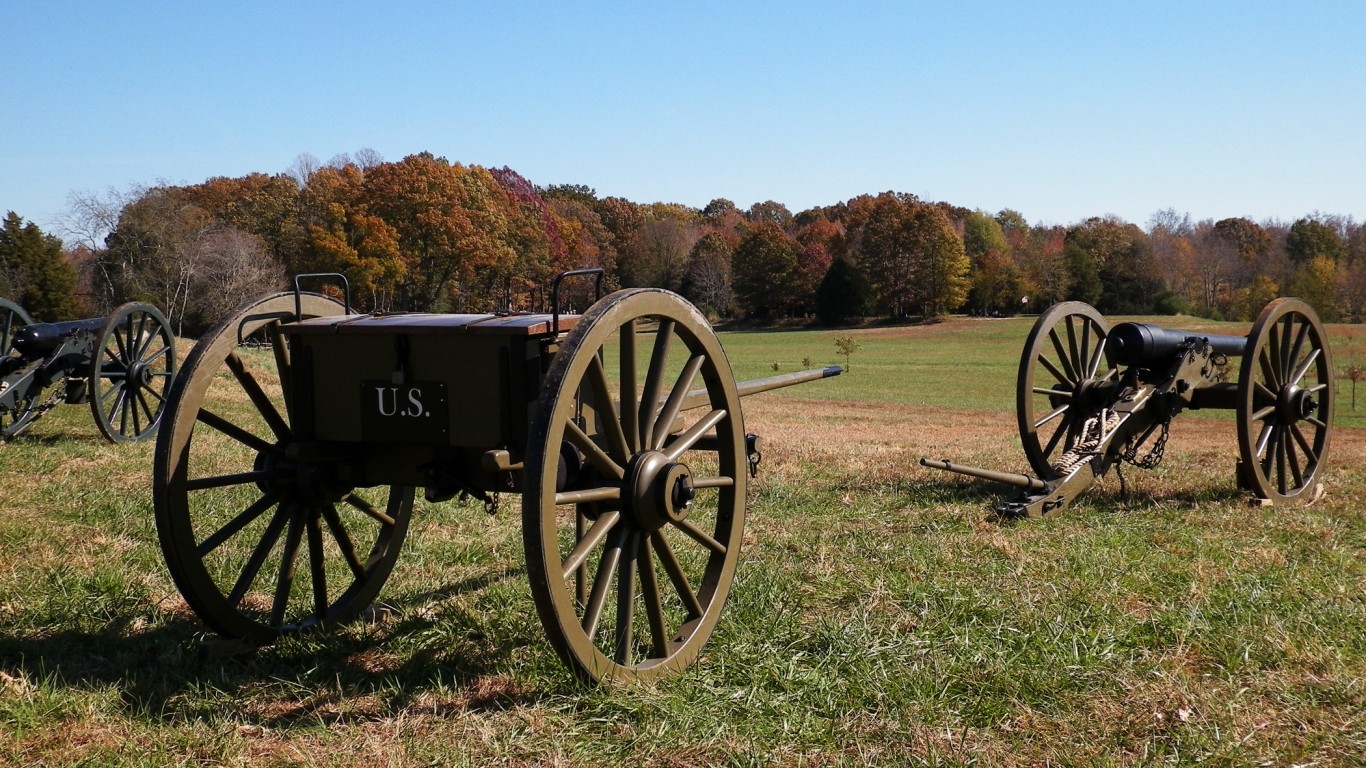 24/7 Wall St.
24/7 Wall St.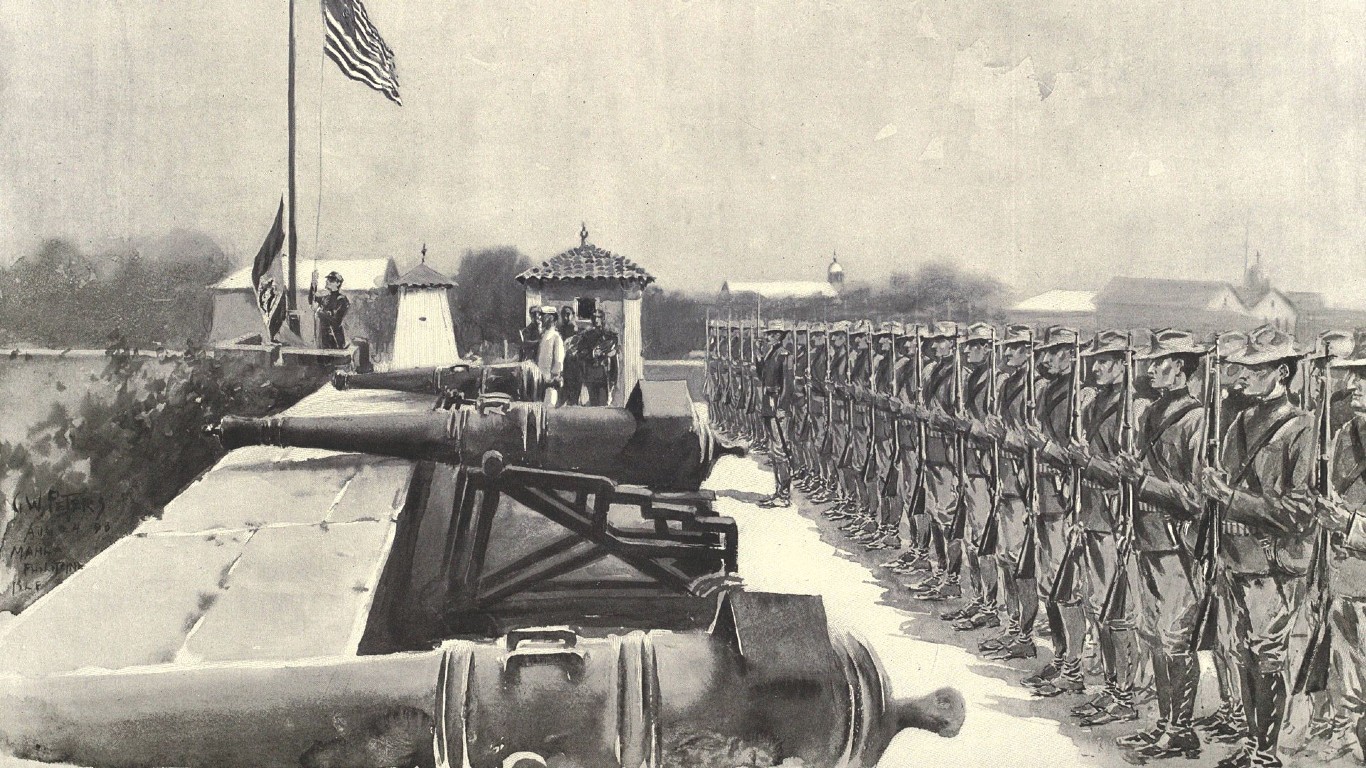 24/7 Wall St.
24/7 Wall St.